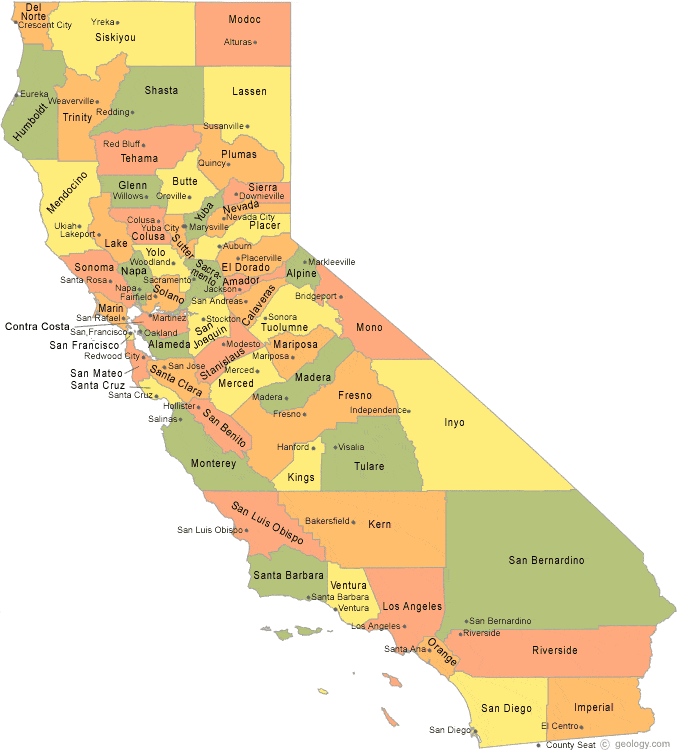How Many Counties Are in the State of California? Quick Facts & Stats
How Many Counties Are in the State of California? Quick Facts & Stats
Blog Article

Have you ever wondered how many counties California actually has? You’re certainly not the only one. From trivia nights to travel planning, the number 58 keeps popping up, and stillthat short answer barely scratches the surface.
The Golden State’s 58 counties createa patchwork of contrasts: surf-washed beach cities, high-elevation wilderness zones, fruit-laden interior valleys, and thriving tech metropolises. Each county carries its own story, moulded byimmigration waves, cutting-edge innovation, and ever-changing demographics.
Over the next few pages, we’ll unpackhow the state’s county map froze at fifty-eight, the real responsibilities counties shoulder, and the record-holders—from the tiniest to the most populous. When we’re done, you’ll know the facts—and map your next California adventure with confidence.
County-Making in Early California
When California joined the Union in 1850, the map looked nothing like today’s. An unprecedented population boom compelled legislators to carve out new counties. Within twenty years, the count had expanded toward more than fifty counties, and that same year the final five were added, setting in stone the official total of 5 8.
Assembly journals reveal that many break-away regions stemmed from three overlapping forces:
- Geographic isolation left settlers days from the nearest courthouse.
- Revenue battles between miners and farmers ignited partition drives.
- Ethnic enclaves sought their own seats.
Within a single generation, the political map hardened. Today, every effort to create county #59 stalls, prompting analysts to call the era when new counties sprouted decisively over.
A County-by-County Tour of Terrains
Stretch a string from foggy Crescent City to border-side Calexico, and you’ll traverse every Köppen zone short of tundra. Ocean-brushed jurisdictions benefit from Mediterranean precipitation, while great agricultural belts battle drought cycles.
- Alpine districts such as Placer, Nevada, and Alpine receive winter snows.
- Sacramento–San Joaquin fringe counties balance peat islands and orchards.
- Island counties like Ventura manage marine sanctuaries.
Such variety explains the stark fiscal gaps between counties. Weather sets tax bases and lifestyles.
What Counties Actually Do
Amid Sacramento’s delegated framework, municipalities handle zoning, but counties are tasked with the bread-and-butter functions that keep daily life humming. From birth to death—vital records, coroner reports, property deeds—all reside at the recorder-assessor’s office.
County law-enforcement offices patrol unincorporated land, while trial courts hear felony cases. Public-health branches coordinate Medi-Cal. Funding debates occur in monthly Board of Supervisors sessions.
Example: Contra Costa’s Shared Services Model
Los Angeles County alone employs 100 000+ workers, showing how adaptable the system is. Uniformity would never work when land areas shift from 47 to 20 000 sq mi.
In the end, these 58 mini-capitols act as middle managers between Capitol and curbside. Grasping their portfolio helps residents demand accountability.
Where the People and Money Are
The state shelters over thirty-nine million people, but that population clusters unevenly. LA County by itself packs nearly 25 %. On the flip side, high-elevation Alpine hovers around a thousand residents.
- Most populous: LA County
- Fewest people: Alpine
- Biggest footprint: San Bernardino County
- Compact footprint: San Francisco
Money, like people, concentrates and evaporates. South Bay enclaves report six-figure median incomes, while interior ag counties face commodity price swings. These fiscal contrasts drive school funding debates every decade.
Knowing which county tops which listis trivia gold: tax rates, job prospects, and lifestyle perks hinge on county lines.
An Epic 58-County Road Trip
For intrepid travellers, visiting every single county has become a badge. One ambitious loop begins in the south-west corner, heads north along Highway 1, jogs east near Monterey, then cuts a diagonal across nut groves and tomato fields, before snaking into the high Sierra for old stamp mills.
Regional Mini-Loops
- Southern Swing – Mission trail coast; 10 counties in three days.
- Valley Ribbon – Grapes to rice paddies; produce-market run.
- Northern Peaks – mountain lakes and volcano cones; fire-lookout hikes.
Cap off the circuit in El Centro, having logged 1 400–2 000 miles. At that point, you can confidently claim you know “how many counties California has”—because you’ve seen them all!
FAQ
Below you’ll find concise answers to the most common county-related queries.
How many counties are in California?
Government documents list 58 counties—no more, no fewer. Check any authoritative source, and you’ll find the same figure: 58 in all.
Which county has the largest population in California?
Los Angeles County tops the list, hosting a population greater than that of many U.S. states. Decades of immigration, entertainment dominance, and job growth keep the numbers high.
Least populous California county?
Tiny Alpine County sits at the bottom of the population chart, often cited at just about a thousand souls. Location along rugged mountain corridors keeps growth modest, preserving a frontier feel.
Which county covers the largest land area in California?
The land-area giant is San Bernardino more info County stretching more than 20 000 square miles. From Joshua trees to ski lifts, few regions illustrate California’s contrasts so vividly.
How did California end up with 58 counties?
Early statehood growth pressures split larger districts into smaller units, with the final adjustments ratified in 1907. Every modern effort to create a new county stalls in committee or dies at the ballot box.
Can new counties still be created in California?
Technically, the California Constitution leaves the door open, though the process is arduous. A break-off region must gather local signatures, win a majority vote in each affected county, and secure legislative approval. Hence, California has remained at 58 for generations.
Why are counties important to everyday life?
Behind the scenes, counties keep daily life functioning: property assessments, public hospitals, welfare programs, and jails. Without county infrastructure, everything from jury duty to restaurant inspections would grind to a halt.
Report this page